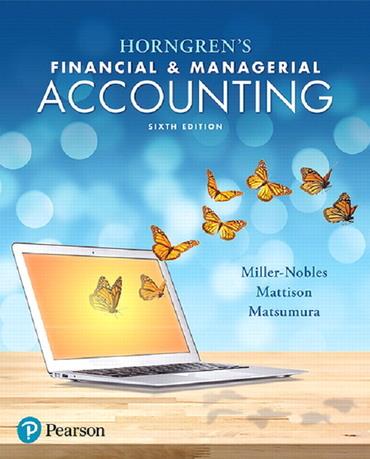Question
Margolis Manufacturing Company is a customer of your bank. The president of the company was in your office earlier in the day to apply for
Margolis Manufacturing Company is a customer of your bank. The president of the company was in your office earlier in the day to apply for an additional line of credit. Trying to help your client, you note that there is a substantial sum of money tied up in inventory. When you pointed this out to the company president, the response was: "We can't afford to run out of stock. Therefore, our policy is to order as infrequently as possible and to keep as much safety stock on hand as can be stored in our warehouse. We order 5,000 units at a time just to make sure we don't run out." As part of your analysis of the company's loan requirements, you call up the controller of the company for some further information. From the conversation, it appears that the company has a substantial quantity of one particular part in its warehouse. The controller relates the following information on this part: Invoice cost $ 120 Shipping charges $2.50 per unit + $175 per shipment Inventory insurance $1 per unit per year Annual costs to audit and inspect inventory $2.60 per unit + $5,000 per year Warehouse utilities $980 per month Warehouse rental $1,500 per month Unloading costs for units received (paid to shipper) $0.80 per unit Receiving supervisor salary $1,760 per month Processing invoices and other purchase documents $16 per order Allowable order quantity 250 or multiples thereof. The company policy is to keep a safety stock of 3,000 units. Annual demand for the part is 45,000 units. The lead time for an order is 4 working days, and there are 300 working days per year for the plant. The controller indicated that if there is a stockout, it would be necessary to obtain the parts by special air courier at an additional cost of $8, 100 per stockout. The probabilities of a stockout with various safety stock levels are given as follows: Safety stock Probability of a stockout 500 units 25% 1,000 units 8% 1,500 units 2% 2,000 units 1% You estimate that the company's cost of capital is approximately 30%. You also know that the state has an inventory tax equal to 1% of the cost of items in inventory, which the state defines as the sum of the invoice price, shipping cost per unit, and the unloading costs. You assume for analysis purposes that a stockout probability of 2% would be reasonable for order cost determination in an optimal inventory policy. Required: a. What is the annual cost of the company's present inventory policy? b. How many units should the company order at a time? c. What is the optimal safety-stock level? d. What is the annual cost of the optimal inventory policy identified in (b) and (c)? e. What is the reorder point?

Step by Step Solution
There are 3 Steps involved in it
Step: 1

Get Instant Access to Expert-Tailored Solutions
See step-by-step solutions with expert insights and AI powered tools for academic success
Step: 2

Step: 3

Ace Your Homework with AI
Get the answers you need in no time with our AI-driven, step-by-step assistance
Get Started


